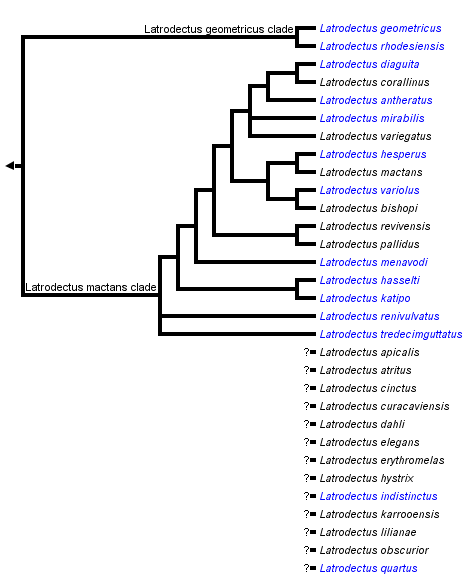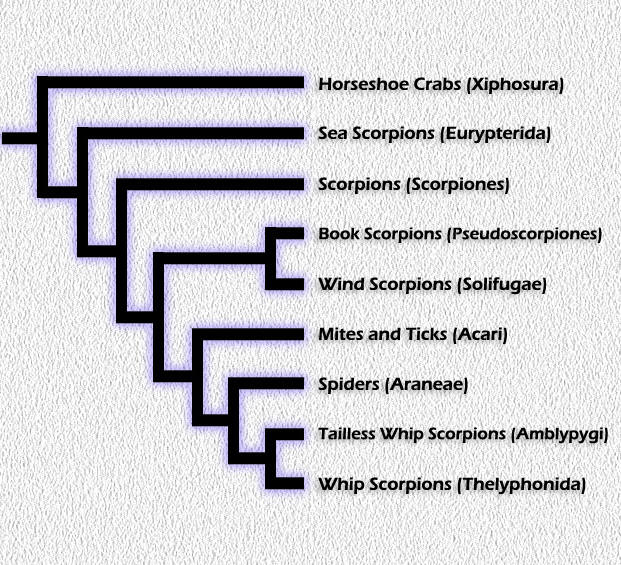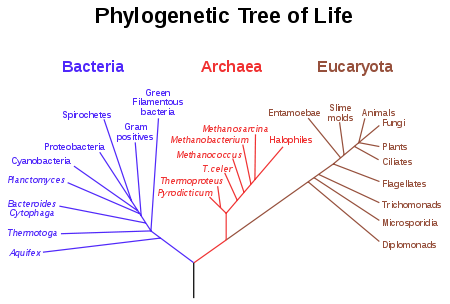Classification
L. hesperus is classified under:
·
the Domain
Eukaryota because they have organ-bound organelles
·
the Kingdom
Animalia because they are heterotrophic and
·
the Phylum
Arthropoda because they are bilaterally symmetrical,
segmented and paired, jointed appendages. They also have an
exoskeleton and grow by molting.
·
the Class
Arachnida because they only two body regions that
join at a waist
·
the Order
Araneae because they prey on other organisms with a
pair of chelicerae
·
the Family
Theridiidae because they have a comb of bristles on
their fourth leg that they use to control the sticky string web they
produce.
·
the Genus
Latrodectus because
their differentiated sex organs from other species
·
the Genus Species
Latrodectus hesperus
because it’s found in the Western part of North America.
The following phylogenic tree is a specific classification of the different species within Latrodectus and is based upon cytochrome oxidase I sequence.
As you can see, there's a lot of work to be done in classifying the many different species of Latrodectus!
Here is a broader tree to give you an idea as to where L. hesperus stands in comparison to other Arthropods also in the subphylum Chelicerata:
This website, from which the above phylogenic tree was taken, also has an AWESOME animation of what the Chelicerates may have looked like as they evolved. Take a peek if you have time!!
Where are spiders in comparison to us (mammals)? The next tree demonstrates that.
Finally, to bring it all together, here's the broadest tree you can get.



